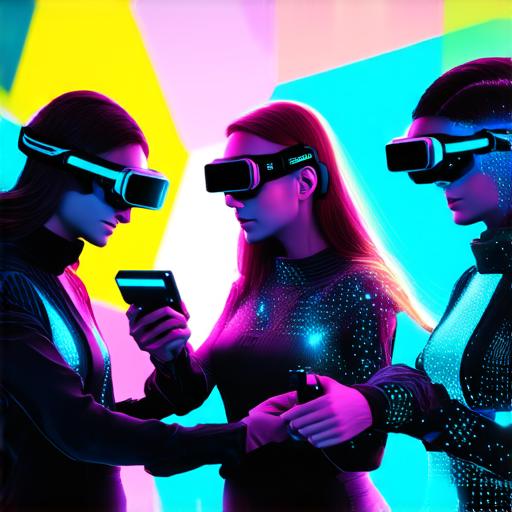Augmented reality (AR) is a technology that enhances the real world with digital elements such as graphics, sounds, and animations. There are several forms of AR, each with its own unique features and applications. In this article, we will explore the three main types of AR and their characteristics.

1. Image-Based Augmented Reality
Image-based AR involves superimposing digital images onto real-world scenes using a camera or smartphone screen. This type of AR is often used in advertising, marketing, and retail to create interactive experiences for customers. For example, an IKEA app uses image-based AR to let users see how furniture would look in their home before buying it.
One of the main advantages of image-based AR is that it does not require any special equipment or hardware. The digital images are overlaid onto the real world using a smartphone’s camera, making it easily accessible to a wide range of users. However, image-based AR can be limited by factors such as lighting and the complexity of the real-world scene being augmented.
2. Object-Based Augmented Reality
Object-based AR involves using physical objects as markers to trigger digital content. This type of AR is often used in education, entertainment, and gaming to create immersive experiences for users. For example, an AR app could use a physical book as a marker to display additional information or animations when scanned.
One of the main advantages of object-based AR is that it can provide a more accurate and reliable experience than image-based AR. By using physical objects as markers, the AR system can better track the user’s position and orientation, allowing for more precise and interactive experiences. However, object-based AR does require specialized hardware such as sensors or cameras to detect the markers, which can be more expensive and complex to implement.
3. Geolocation-Based Augmented Reality
Geolocation-based AR involves using a user’s location data to overlay digital content onto the real world. This type of AR is often used in travel and tourism to provide users with information about local landmarks, monuments, and attractions. For example, an AR app could use a user’s GPS coordinates to display additional information about a historical site or monument when they are nearby.
One of the main advantages of geolocation-based AR is that it can provide users with a more personalized and engaging experience. By using a user’s location data, the AR system can tailor the content to the user’s specific interests and needs. Additionally, geolocation-based AR can be used to provide users with real-time information about their surroundings, making it a useful tool for exploring new places.
Conclusion
In conclusion, there are three main forms of augmented reality: image-based, object-based, and geolocation-based. Each form has its own unique features and applications, making it suitable for different use cases and industries. By understanding the characteristics of each type of AR, developers and users can choose the most appropriate technology for their needs. As AR continues to evolve and become more widespread, we can expect to see even more innovative and exciting applications in the future.
